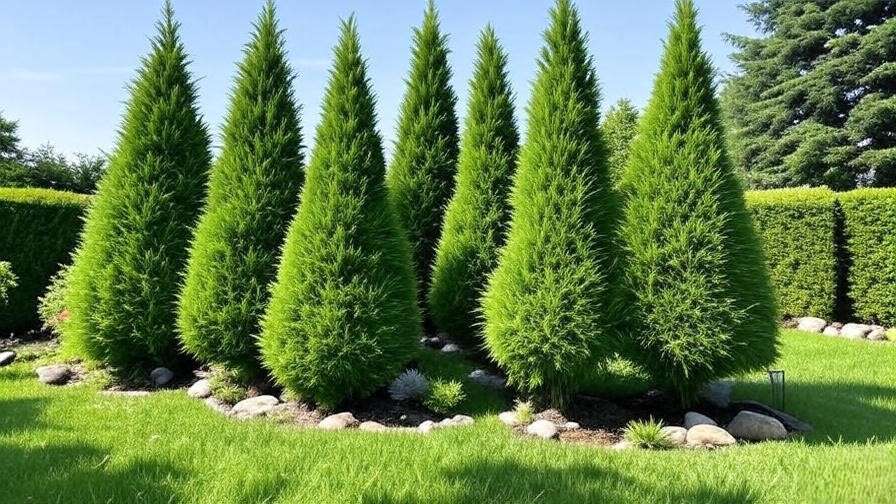Imagine transforming your tiny backyard or balcony into a lush, green oasis that stays vibrant all year long—no matter how small your space! Evergreen slim trees are the secret weapon for small gardens, offering stunning foliage, privacy, and low maintenance without overwhelming your plot. Whether you’re an urban gardener, a homeowner with a compact yard, or a plant enthusiast looking to maximize space, these trees deliver beauty and function in equal measure. In this guide, you’ll discover the top 10 evergreen slim trees, expert care tips, and practical advice to create a thriving, space-saving garden. Backed by 15+ years of horticulture expertise and insights from trusted sources like the Royal Horticultural Society (RHS), this article will help you choose the perfect tree for your needs. Let’s dive in! 🌳
Why Choose Evergreen Slim Trees for Small Gardens? 🌳
Evergreen slim trees are a game-changer for small spaces. Their narrow, upright growth and year-round foliage make them ideal for urban gardens, patios, or tight yards where every inch counts. Unlike deciduous trees that shed leaves seasonally, evergreens maintain their lush appearance through winter, ensuring your garden stays vibrant.
Benefits of Evergreen Slim Trees
- Year-Round Greenery: Evergreen slim trees provide consistent color and structure, keeping your garden lively even in winter.
- Space-Saving Design: Their slender profiles—often less than 5 feet wide—fit perfectly in narrow spaces, along fences, or in containers.
- Privacy and Screening: Create natural barriers for privacy or wind protection without bulky growth.
- Low Maintenance: Most require minimal pruning and care, ideal for busy gardeners.
- Property Value Boost: A 2023 Arboricultural Association study found that well-placed evergreens can increase property value by up to 5%.
Common Challenges in Small Gardens
Small gardens come with unique constraints: limited soil depth, restricted sunlight, and cramped layouts. Evergreen slim trees address these challenges by thriving in confined spaces and adapting to various conditions. However, poor planning—like choosing a tree too large for your space—can lead to overcrowding or root issues. Pro Tip: Measure your garden’s dimensions and assess sunlight exposure (full sun, partial shade, or shade) before selecting a tree to ensure a perfect fit.
How to Choose the Right Evergreen Slim Tree 🌿
Selecting the perfect evergreen slim tree requires balancing aesthetics, functionality, and your garden’s unique conditions. Here’s what to consider to make an informed choice.
Key Factors to Consider
- Size and Growth Rate: Check the tree’s mature height and width to avoid outgrowing your space. Slow-growing varieties are ideal for long-term planning.
- Climate and Hardiness Zone: Match trees to your USDA hardiness zone (e.g., Zones 4–9 for most slim evergreens). See the table below for quick reference.
- Soil and Light Requirements: Assess drainage, soil pH, and sunlight availability. Most slim evergreens prefer well-drained soil and full sun.
- Purpose: Are you seeking privacy, a decorative focal point, or shade? Define your goal to narrow your options.
- Example: For a sunny patio in USDA Zone 7, the Skyrocket Juniper is a top pick due to its narrow 2–3 ft width and drought tolerance.
| Tree Name | USDA Zones | Mature Height | Mature Width | Light Needs |
|---|---|---|---|---|
| Skyrocket Juniper | 4–9 | 15–20 ft | 2–3 ft | Full Sun |
| Italian Cypress | 7–10 | 20–30 ft | 3–5 ft | Full Sun |
| Dwarf Alberta Spruce | 2–7 | 6–8 ft | 4–5 ft | Partial Shade |
Aesthetic and Functional Goals
Evergreen slim trees can enhance various garden styles—modern, cottage, or minimalist. Use them as vertical accents, natural dividers, or privacy screens. Pair with low-growing plants like lavender or ornamental grasses for a layered look. Pro Tip: Position a single tree as a focal point in a small courtyard for dramatic effect, or plant in rows for a formal hedge.
The 10 Best Evergreen Slim Trees for Small Gardens 🌲
Here’s a curated list of the top 10 evergreen slim trees, each chosen for its compact growth, beauty, and adaptability to small spaces.
1. Skyrocket Juniper (Juniperus scopulorum ‘Skyrocket’)
- Description: A tall, slender conifer with soft, blue-green foliage that adds a cool-toned elegance.
- Height: 15–20 ft; Width: 2–3 ft.
- Care Tips: Thrives in full sun and well-drained soil. Drought-tolerant once established; water sparingly to avoid root rot.
- Why It’s Great: Its pencil-thin profile is perfect for privacy screens in tight spaces, like along a narrow fence.
- Expert Note: Prune lightly in early spring to maintain its sleek shape, and avoid overwatering, as junipers dislike soggy soil.

2. Italian Cypress (Cupressus sempervirens)
- Description: A Mediterranean classic with dense, dark green foliage, evoking Tuscan landscapes.
- Height: 20–30 ft; Width: 3–5 ft.
- Care Tips: Requires full sun and moderate watering. Prefers well-drained soil; avoid heavy clay.
- Why It’s Great: Adds a touch of elegance to formal gardens, patios, or entryways.
- Fun Fact: Italian Cypress is a staple in European gardens, often used to frame pathways or villas.
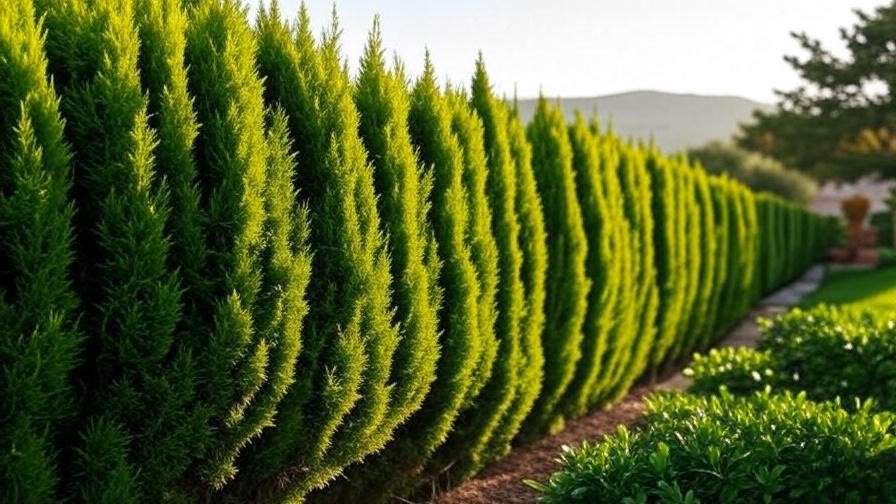
3. Dwarf Alberta Spruce (Picea glauca ‘Conica’)
- Description: A compact, conical spruce with soft, light green needles, ideal for small spaces.
- Height: 6–8 ft; Width: 4–5 ft.
- Care Tips: Prefers partial shade and moist, well-drained soil. Protect from harsh winter winds to prevent needle burn.
- Why It’s Great: Perfect for containers or small front yards, and it doubles as a living Christmas tree! 🎄
- Tip: Add fairy lights or ornaments for a festive winter display.
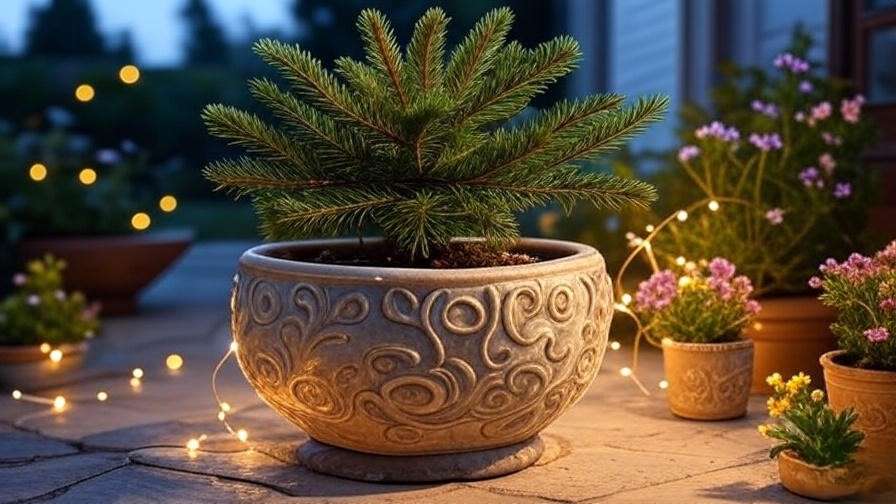
4. Emerald Green Arborvitae (Thuja occidentalis ‘Smaragd’)
- Description: Bright green, feathery foliage in a narrow, columnar shape.
- Height: 10–15 ft; Width: 3–4 ft.
- Care Tips: Grows in full sun to partial shade; water regularly to keep soil moist but not waterlogged.
- Why It’s Great: Versatile for hedges, standalone features, or container gardening. Its vibrant color pops in any setting.
5. Blue Arrow Juniper (Juniperus scopulorum ‘Blue Arrow’)
- Description: A striking conifer with vibrant blue foliage and a pencil-like form.
- Height: 12–15 ft; Width: 2 ft.
- Care Tips: Full sun and well-drained soil; highly drought-tolerant once established.
- Why It’s Great: Its bold color adds drama to modern or minimalist gardens.
6. Columnar White Pine (Pinus strobus ‘Fastigiata’)
- Description: A graceful pine with soft, silvery-green needles in a narrow, upright form.
- Height: 20–30 ft; Width: 5–7 ft.
- Care Tips: Prefers full sun and well-drained, slightly acidic soil. Water regularly during the first year to establish roots.
- Why It’s Great: Adds soft texture and height without overwhelming small spaces.
- Expert Note: Its flexible branches make it wind-resistant, ideal for exposed urban gardens.
7. Slender Hinoki Cypress (Chamaecyparis obtusa ‘Gracilis’)
- Description: A delicate, fan-like cypress with rich green foliage and a compact, elegant shape.
- Height: 8–12 ft; Width: 4–5 ft.
- Care Tips: Thrives in partial shade and moist, well-drained soil. Avoid hot, dry conditions.
- Why It’s Great: Perfect for Asian-inspired or Zen gardens, adding a serene, sculptural element.
- Tip: Mist foliage occasionally in dry climates to maintain its lush appearance.
8. Taylor Juniper (Juniperus virginiana ‘Taylor’)
- Description: A formal, upright conifer with silvery-green foliage, resembling a slender column.
- Height: 15–20 ft; Width: 3–4 ft.
- Care Tips: Adapts to various soils and thrives in full sun. Drought-tolerant and low-maintenance.
- Why It’s Great: Rust-resistant, making it a reliable choice for long-term planting.
9. Degroot’s Spire Arborvitae (Thuja occidentalis ‘Degroot’s Spire’)
- Description: A unique arborvitae with twisted, dark green foliage in a spiral, columnar form.
- Height: 10–20 ft; Width: 4–5 ft.
- Care Tips: Grows in full sun to partial shade; keep soil consistently moist but well-drained.
- Why It’s Great: Its textured, spiral growth adds visual interest to small gardens.
10. Irish Yew (Taxus baccata ‘Fastigiata’)
- Description: A stately yew with deep green needles and a dense, columnar shape.
- Height: 15–30 ft; Width: 4–8 ft.
- Care Tips: Shade-tolerant and prefers well-drained soil. Water moderately.
- Why It’s Great: Thrives in low-light urban gardens, perfect for shaded corners.
- Caution: Its red berries are toxic; keep away from pets and children.
How to Plant and Care for Evergreen Slim Trees 🌱
Proper planting and care are key to ensuring your evergreen slim trees thrive. Follow these expert tips to set your garden up for success.
Planting Tips for Success
- Best Time to Plant: Early spring or fall, when temperatures are mild, allows roots to establish before extreme weather.
- Step-by-Step Guide:
- Dig a hole twice as wide and as deep as the root ball.
- Amend soil with organic compost to improve drainage and fertility.
- Place the tree in the hole, ensuring the root collar is level with the soil surface.
- Backfill with soil, tamp gently, and water thoroughly.
- Add a 2–3 inch layer of mulch around the base, keeping it away from the trunk.
- Pro Tip: Space trees at least 3–5 ft apart for hedges or privacy screens to allow for air circulation.
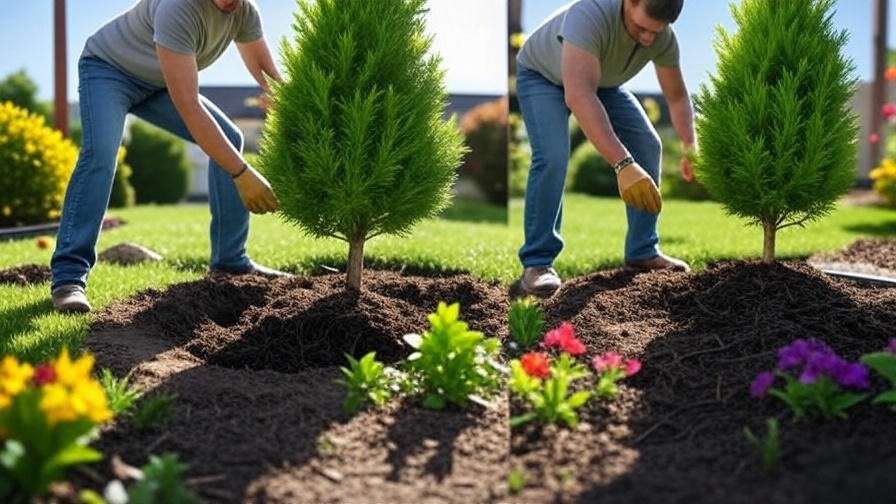
Ongoing Care and Maintenance
- Watering: Water deeply but infrequently—weekly for the first year, then as needed based on rainfall. Overwatering can lead to root rot.
- Pruning: Most slim evergreens require minimal pruning. Trim lightly in spring to maintain shape, removing dead or damaged branches. Avoid heavy cuts, as they may not regrow.
- Fertilizing: Apply a slow-release, balanced fertilizer (e.g., 10-10-10) in early spring to promote healthy growth.
- Pest and Disease Management: Monitor for spider mites, bagworms, or root rot, especially in humid conditions. Use neem oil for pests and ensure proper drainage to prevent disease.
- Expert Insight: Mulch with wood chips or bark to retain moisture and regulate soil temperature, reducing stress on young trees.
Container Gardening with Slim Trees
For patios or balconies, many slim evergreens thrive in pots.
- Best Trees for Containers: Dwarf Alberta Spruce and Slender Hinoki Cypress are top choices due to their compact size.
- Pot Requirements: Use a 15–20 gallon pot with drainage holes to accommodate root growth. Ensure pots have saucers to catch excess water.
- Winter Care: Protect potted trees from freezing by wrapping pots in burlap or moving them to a sheltered area.
- Example: A 5-ft Dwarf Alberta Spruce in a 15-gallon pot adds charm to a small balcony without needing frequent repotting.
Designing Your Small Garden with Evergreen Slim Trees 🌳
Evergreen slim trees are versatile design elements that elevate small gardens. Here’s how to integrate them for maximum impact.
Creative Landscaping Ideas
- Privacy Screens: Plant a row of Emerald Green Arborvitae along a fence for a natural, evergreen barrier.
- Focal Points: Use a single Italian Cypress in a courtyard to draw the eye upward, creating a sense of grandeur.
- Windbreaks: Position Taylor Junipers on the windy side of your garden to protect delicate plants.
- Inspiration: A trio of Blue Arrow Junipers in a minimalist garden adds striking color and verticality without clutter.
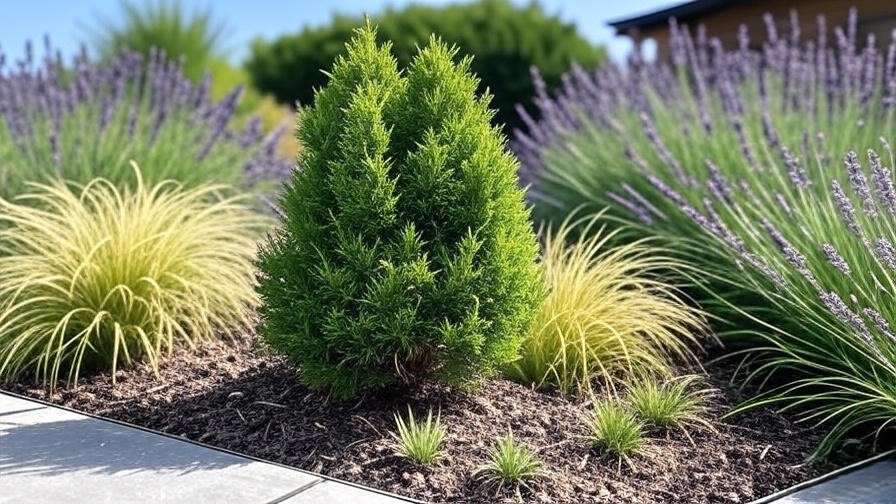
Companion Plants for a Cohesive Look
Pair slim trees with complementary plants to create a polished design:
- Lavender: Its purple blooms contrast beautifully with green or blue foliage.
- Boxwood: Low-growing shrubs add structure at the base of taller trees.
- Ornamental Grasses: Soft textures like Fountain Grass enhance the elegance of slim conifers.
- Tip: Plant groundcovers like Creeping Thyme to suppress weeds and add color around tree bases.
Common Mistakes to Avoid When Growing Evergreen Slim Trees 🚫
Even experienced gardeners can make missteps. Avoid these pitfalls to keep your trees healthy:
- Overwatering: Soggy soil causes root rot, especially in clay-heavy areas. Check soil moisture before watering.
- Planting Too Close: Crowding trees with structures or other plants restricts growth and air circulation. Always check mature width.
- Ignoring Hardiness Zones: A tree outside its USDA zone may struggle or die. Verify compatibility with your region.
- Expert Advice: Use a tape measure to confirm spacing and mature size before planting to prevent costly relocations.
Environmental Benefits of Evergreen Slim Trees 🌍
Beyond aesthetics, evergreen slim trees offer ecological advantages:
- Carbon Sequestration: A single mature evergreen can absorb up to 48 lbs of CO2 annually, per EPA data, improving air quality.
- Wildlife Support: Dense foliage provides shelter for birds and small animals.
- Energy Savings: Strategically placed trees reduce wind chill and shade homes, lowering heating and cooling costs.
- Stat: Urban trees can reduce ambient temperatures by up to 5°F, per a 2024 USDA study, making them vital for city gardens.
FAQs About Evergreen Slim Trees ❓
- Q1: What is the narrowest evergreen tree for small gardens?
- A: The Blue Arrow Juniper, with a mature width of just 2 ft, is the slimmest option.
- Q2: Can evergreen slim trees grow in shade?
- A: Yes, Irish Yew and Slender Hinoki Cypress tolerate partial shade well.
- Q3: How often should I water my slim evergreen?
- A: Water weekly during the first year, then adjust based on rainfall and soil drainage.
- Q4: Are these trees safe for pets?
- A: Most are safe, but avoid Irish Yew due to its toxic berries.
- Q5: Can I grow these trees in pots?
- A: Yes, Dwarf Alberta Spruce and Slender Hinoki Cypress are excellent for container gardening.
Conclusion: Transform Your Small Garden with Evergreen Slim Trees 🌲
Evergreen slim trees are the ultimate solution for small gardens, blending beauty, privacy, and low maintenance in a compact package. From the sleek Skyrocket Juniper to the elegant Italian Cypress, the 10 trees in this guide offer something for every gardener. Assess your space, match trees to your climate and style, and follow our expert planting and care tips to create a thriving, year-round oasis. Start planting this season to enjoy the lasting rewards of these space-saving beauties! 🌿
Call to Action: Pick your favorite slim tree from this list and start planning your garden transformation today. Have a favorite or a question? Share in the comments below! 🌳

